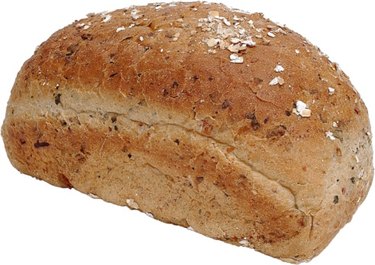
Yeast and vinegar are used together in two completely different applications. One application is the use of vinegar to enhance the rising effect of yeast used in bread and pastry baking. The second application is the use of vinegar as a dietary supplement to help control yeast infections in the human body. This article concerns the first application, the mixing of vinegar and yeast in baking.
Vinegar
Video of the Day
The active chemical agent in vinegar is acetic acid, also known as ethanoic acid. The amount of acetic acid in vinegar is around 5%. This percentage can vary slightly by type (balsamic, cider, white or brown) and brand. From a chemical standpoint, the variation is not enough that one type of vinegar cannot be substituted for another. From a taste standpoint, the amount of vinegar used to enhance the effect of yeast in baking (a single teaspoonful per loaf of bread) is low enough that it cannot be detected regardless the type of vinegar used.
Video of the Day
Yeast
Yeast is a living organism; a fungi, to be exact. In their 2005 article, Biodiversity and Ecophysiology of Yeasts, Kurtzman and Fell estimate that the 1500 named species of yeast only constitute 1% of the fungi kingdom. The type of yeast used in baking is the species Saccharomyces cerevisiae, also known as baker's or brewer's yeast. When yeast is mixed with flour and water, yeast and flour enzymes work together to break the flour's starch molecules down into the simple sugars yeast feeds on. In metabolizing the sugars, the yeast excretes liquid ethyl alcohol and carbon dioxide gas.
Bread Basics
The molecular structure of bread dough is primarily made up of gluten, a protein that is not water-soluble. It is gluten that gives bread dough its elastic, gum-like consistency. When yeast is added to dough, the carbon dioxide gas that the yeast releases as part of its metabolic processes becomes trapped in the gluten, creating bubbles. It is this carbon dioxide bubble formation that causes bread to rise.
Vinegar + Bread
While vinegar in large amounts is used as an organic fungicide, small amounts such as that used in baking is not lethal to yeast. Adding vinegar to bread dough has two effects. First, the acetic acid in the vinegar weakens gluten molecules, making the dough more susceptible to bubble formation. Second, the chemical composition of acetic acid is CH3COOH, meaning that additional carbon dioxide is made available due to the release of carbon dioxide by acetic acid as it is neutralized by the gluten.